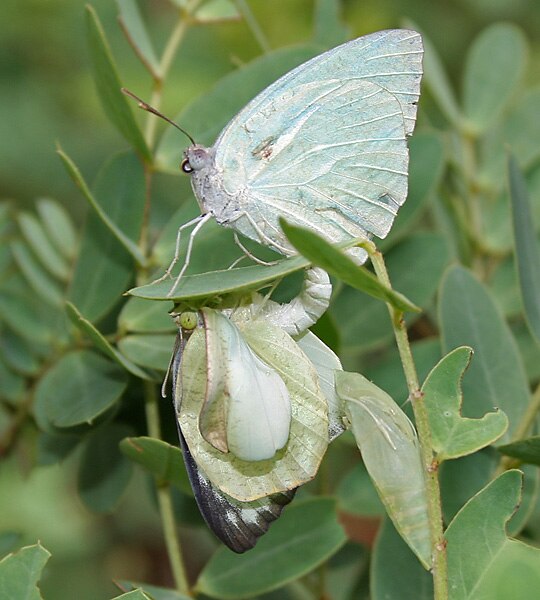In beekeeping, bee brood or brood refers to the eggs, larvae and pupae of honeybees. The brood of Western honey bees develops within a bee hive. In man-made, removable frame hives, such as Langstroth hives, each frame which is mainly occupied by brood is called a brood frame. Brood frames usually have some pollen and nectar or honey in the upper corners of the frame. The rest of the brood frame cells may be empty or occupied by brood in various developmental stages. During the brood raising season, the bees may reuse the cells from which brood has emerged for additional brood or convert it to honey or pollen storage. Bees show remarkable flexibility in adapting cells to a use best suited for the hive's survival.
Recently hatched honey bee larvae are feeding on royal jelly for three days. Only larvae selected to become queens are fed the jelly longer than three days.
Eggs and larvae (brood cell walls partially cut away)
Older larvae in open cells. On the lower left is one about to pupate. On the upper right is one partly capped.
A pupa is the life stage of some insects undergoing transformation between immature and mature stages. Insects that go through a pupal stage are holometabolous: they go through four distinct stages in their life cycle, the stages thereof being egg, larva, pupa, and imago. The processes of entering and completing the pupal stage are controlled by the insect's hormones, especially juvenile hormone, prothoracicotropic hormone, and ecdysone. The act of becoming a pupa is called pupation, and the act of emerging from the pupal case is called eclosion or emergence.
Pupa of the rose chafer beetle, Cetonia aurata
Tumbler (pupa) of a mosquito. Unlike most pupae, tumblers can swim around actively.
Adult Hercus fontinalis emerging from cocoon
Mating in pierid Catopsilia pyranthe of male with newly emerged female.







